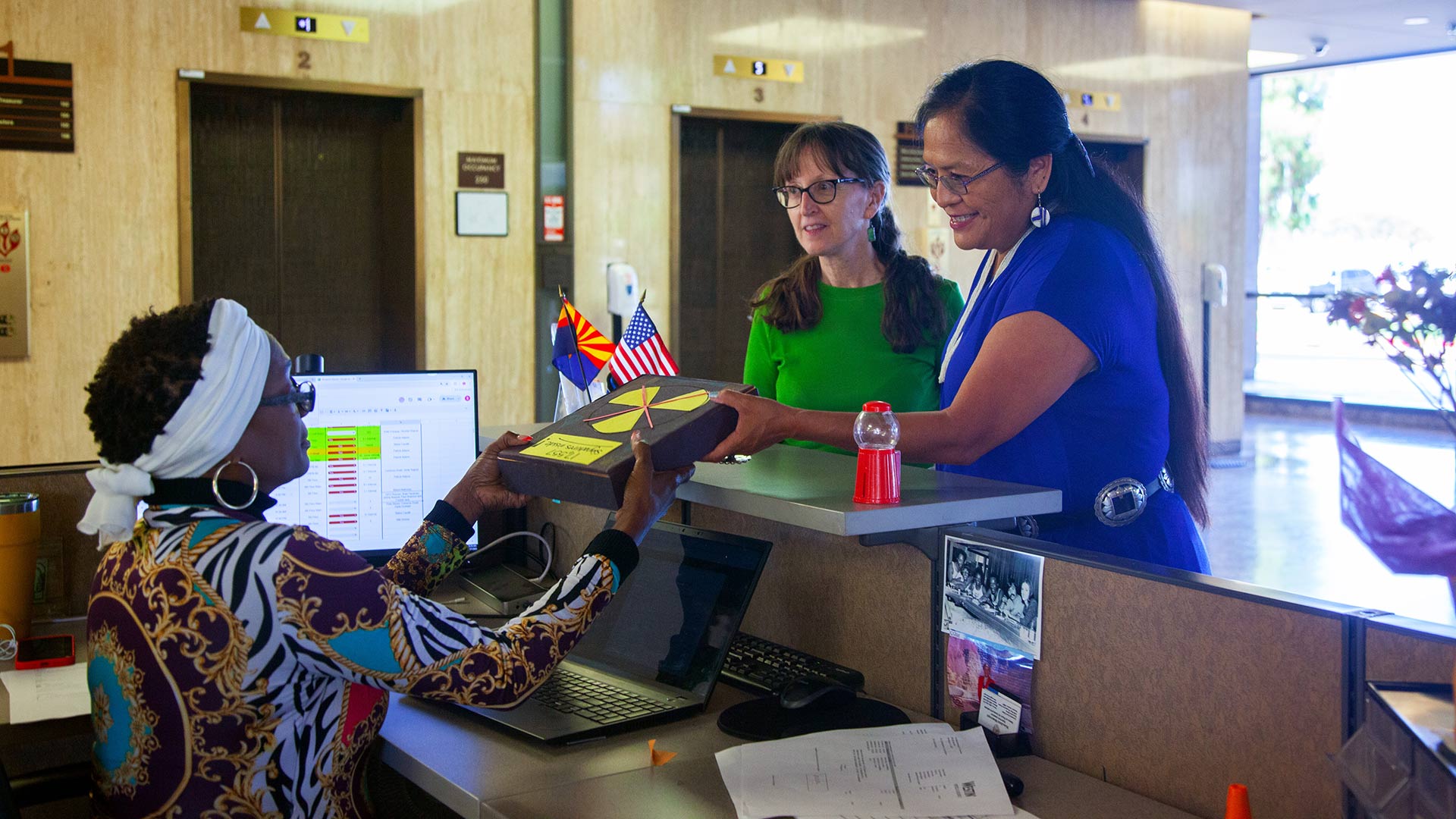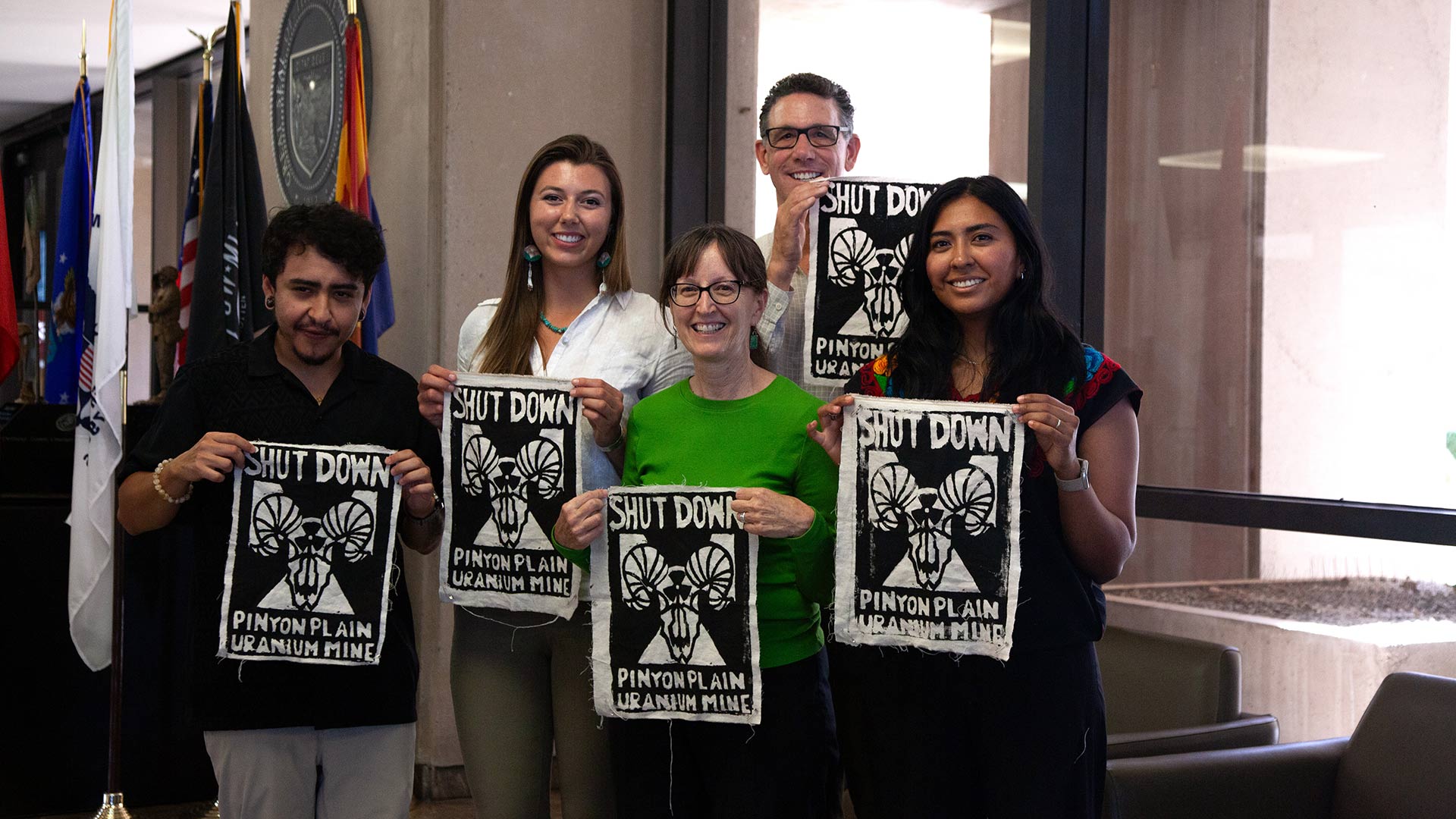 Sandy Bahr, director of the Grand Canyon Chapter of the Sierra Club (left) and Carletta Tilousi, Havasupai tribal member and leader (right) hand off over 17,000 petition signatures to Governor Katie Hobbs, urging her to shut down the Pinyon Plain uranium mine outside of the Grand Canyon on Thursday, June 27, in Phoenix, Ariz. This follows a letter sent to the governor earlier this year, which requested her action to limit the mine's activities to closure and maintenance activities.
Sandy Bahr, director of the Grand Canyon Chapter of the Sierra Club (left) and Carletta Tilousi, Havasupai tribal member and leader (right) hand off over 17,000 petition signatures to Governor Katie Hobbs, urging her to shut down the Pinyon Plain uranium mine outside of the Grand Canyon on Thursday, June 27, in Phoenix, Ariz. This follows a letter sent to the governor earlier this year, which requested her action to limit the mine's activities to closure and maintenance activities.
Environmental activists Thursday morning submitted more than 17 thousand petition signatures asking Governor Katie Hobbs to close the only active uranium mine in the Grand Canyon region.
Taylor McKinnon with the Center for Biological Diversity says they have heard “radio silence” from Hobbs since submitting a letter calling for the Pinyon Plain mine’s closure earlier this year.
“It may be politically uncomfortable for the governor to act here, but she needs to do that,” McKinnon said. “She was elected to lead, to make hard decisions, and to protect the intergenerational equity of Arizonans, and certainly protecting the groundwater at the Grand Canyon should be foremost in the Grand Canyon state's governor's concerns.”
 VIEW LARGER Sandy Bahr and environmental advocates protesting the Pinyon Plain uranium mine at Governor Katie Hobbs' office in Phoenix, Ariz., on Thursday, June 27. Bahr, director of the Grand Canyon Chapter of the Sierra Club alongside the Center for Biological Diversity, HaulNo! and other environmental advocacy groups dropped off over 17,000 petition signatures to the governor, urging her to close the mine located in the Grand Canyon region.
VIEW LARGER Sandy Bahr and environmental advocates protesting the Pinyon Plain uranium mine at Governor Katie Hobbs' office in Phoenix, Ariz., on Thursday, June 27. Bahr, director of the Grand Canyon Chapter of the Sierra Club alongside the Center for Biological Diversity, HaulNo! and other environmental advocacy groups dropped off over 17,000 petition signatures to the governor, urging her to close the mine located in the Grand Canyon region. While the designation of the Grand Canyon National Monument protects nearly one million acres of federal land from new mining claims, Pinyon Plain was one of the few that were grandfathered in.
“This is the Grand Canyon. This is our state's namesake, and our state's governor needs to assert leadership and close this mine down…Permanent pollution of Grand Canyon's aquifers is not a risk that we should be taking,” he said.
The mine opened in 1986 but started extracting ore for the first time this January. For nearly forty years, the Havasupai Tribe has called for its closure, citing potential uranium contamination in their waters. Carletta Tilousi, a former tribal councilwoman for the Havasupai, has spent decades being the voice of her community. She says too much is at stake here.
“The Redwall-Muav aquifer is one of the largest aquifers in the southwest that many citizens in the state of Arizona rely on,” Tilousi said. “The City of Phoenix, Las Vegas and the area really need to be aware that there's mining happening, and if we don't join together to address the need for clean water, it's going to be a very dangerous future for our people.”

By submitting your comments, you hereby give AZPM the right to post your comments and potentially use them in any other form of media operated by this institution.